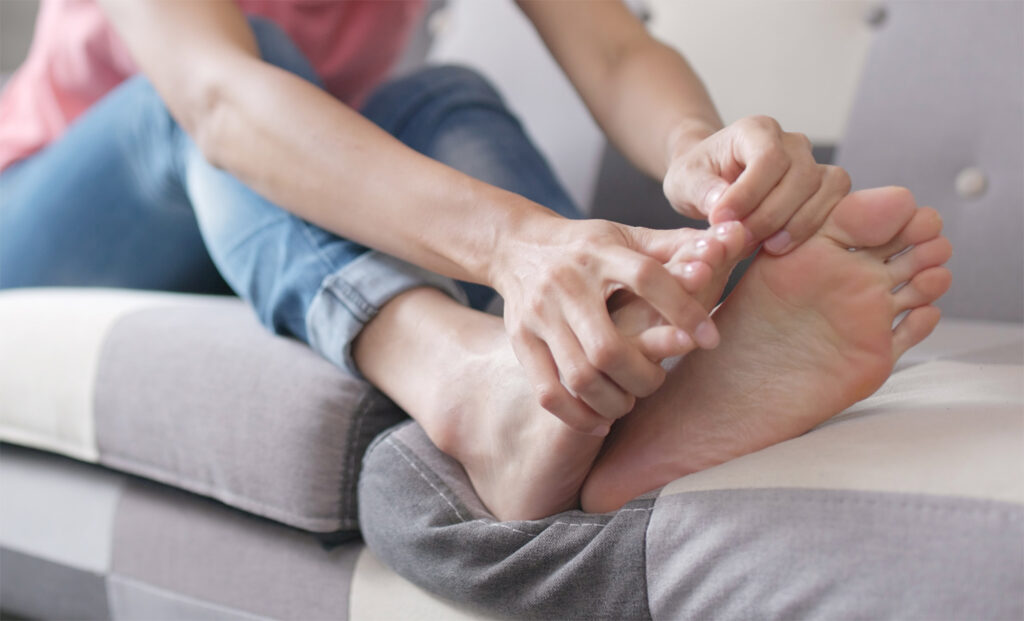
Callus on the foot or corn (clavus) is a cone-shaped inwardly directed area of thickened skin on the feet or hands. It occur as a response to repeated pressure of the skin to the bone. The skin defends itself against pressure by forming additional layers that, like a thorn, begins to sting the surrounding tissue causing pain along the nerves. By removing the provoking factor, a callus disappears spontaneously. In adults, it is most often seen in areas where exostosis developed.
Calluses appear more often in women, 3: 1 compared to men.
There are 2 types of plantar calluses:
Solid calluses that form on the sole of the foot. Solid dry, with a large thickened tissue around the central plug. These calluses can cause great pain resulting in difficulty when walking, even a curvature of the spine.
Soft calluses are formed between the toes. They are soft, moist and have a whitish appearance.
It is difficult for patients to distinguish calluses from viral warts. The biggest misconception occurs in children. It is very rare to see a callus in children before the age of 16.
The difference can sometimes be made only when the superficial thickened skin is removed. In case of viral warts, when the softer part of the plug appears, the spotted blood vessels emerge that are never seen when removing calluses.
Plantar calluses removal
The basic therapy for removing calluses consists of removing the skin pressure. If it is possible to remove the exostosis or surgically correct the bone deformity, the cure is permanent. Sometimes it is enough to use corrective pads to reduce the pressure.
Until the correction of the bone tissue is performed, it is possible to regularly remove the thickened skin oh the callus. In a clinic, a physician can completely remove the excess tissue leading to relief throughout the entire month, until a new callus forms again. At home, patients can apply acids that soften the skin and carefully scrape the central part. The problem with home use of acids is in the corrosion of the surrounding tissue, which is already hypersensitive due to the constant pressure.
For soft calluses, silicone patches that separate the toes and reduce pressure are recommended.
Therapy should not be delayed, even if it is not a permanent solution. When the surrounding skin is damaged, infections can more easily develop, making the recovery period a lot longer.
Surgery is used when the clavus is so large that it prevents proper walking.
There is no adequate prevention, but regular immersion of the feet in warm water and adequate foot hygiene can alleviate the problems.
It is recommended to wear comfortable shoes, which do not increase the pressure on the callus.




